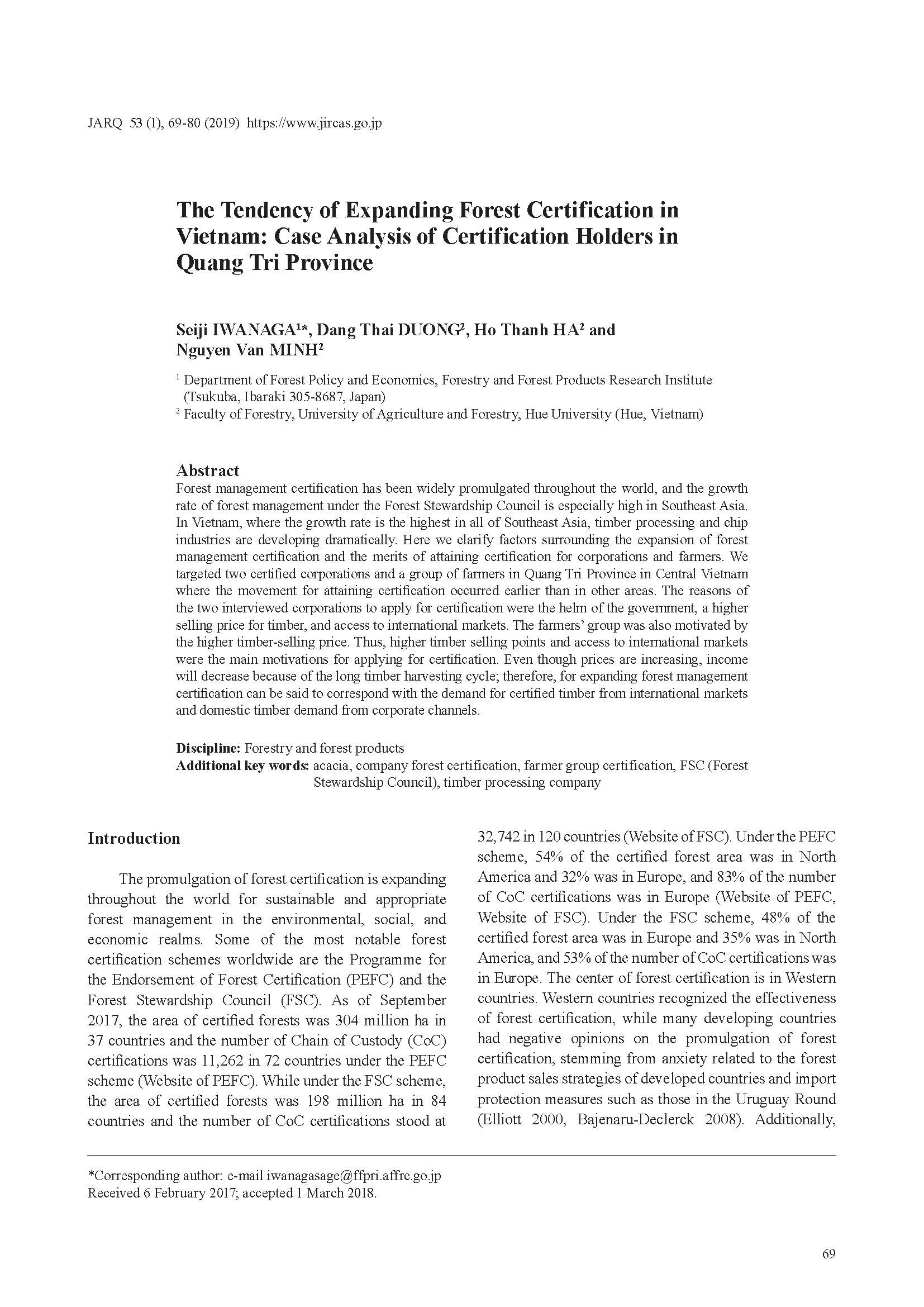The tendency of expanding forest certification in Vietnam: Case analysis of certification holders in Quang Tri Province
Japan Agricultural Research Quarterly
| ISSN | 00213551 |
|---|---|
| NII recode ID (NCID) | AA0068709X |

Full text
jarq53-1_69-80.pdf804.95 KB
The forest management certification has widely promulgated throughout the world, and the growth rate of forest management under the Forest Stewardship Council is especially high in Southeast Asia. In Vietnam, where the growth rate is the highest in all of Southeast Asia, timber processing and chip industries are developing dramatically. Here we clarify factors surrounding the expansion of forest management certification and the merits of attaining certification for corporations and farmers. We targeted two certified corporations and a group of farmers in the Quang Tri Province in Central Vietnam where the movement for attaining certification occurred earlier than in other areas. The reasons of the two interviewed corporations to apply for certification were the helm of the government, a higher selling price for timber, and access to international markets. The farmers’ group was also motivated by the higher timber-selling price. Thus, higher timber selling points and access to international markets were the main motivations for applying for certification. Even though prices are increasing, income will decrease because of the long timber harvesting cycle; therefore, for expanding forest management certification can be said to correspond with the demand for certified timber from international markets and domestic timber demand from corporate channels.
| Date of issued | |
|---|---|
| Creator | IWANAGA Seiji DUONG Dang Thai HA Ho Thanh MINH Nguyen Van |
| Subject | acacia company forest certification farmer group certification FSC (Forest Stewardship Council) timber processing company |
| Publisher | Japan International Research Center for Agricultural Sciences |
| Received Date | 2017-02-06 |
| Accepted Date | 2018-03-01 |
| Volume | 53 |
| Issue | 1 |
| spage | 69 |
| epage | 80 |
| DOI | 10.6090/jarq.53.69 |
| Language | eng |
